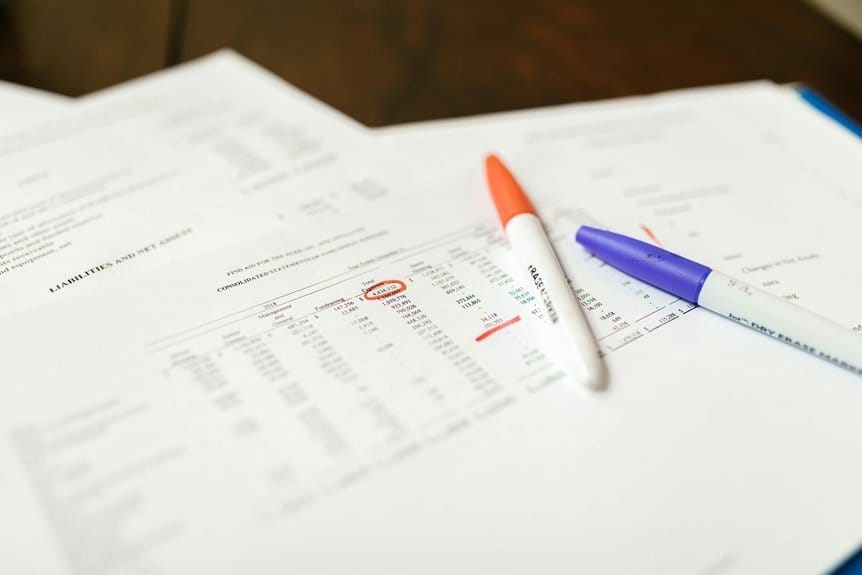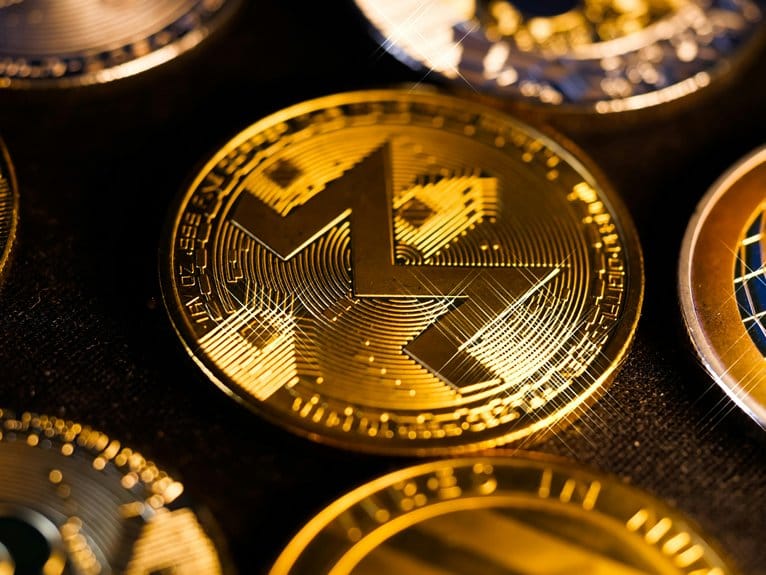Real world asset tokenization platforms have revolutionized traditional investments by digitizing physical and financial assets on blockchain networks. Industry leaders like Goldfinch and Centrifuge have facilitated over $800M in tokenized assets, while major institutions including JP Morgan and BlackRock are developing proprietary solutions. The market is projected to reach $16.1 trillion by 2030, with a 50.2% CAGR through 2026. Key sectors include real estate, commodities, fine art, and renewable energy projects. Smart contracts enable fractional ownership, automated compliance, and 24/7 trading while reducing costs. Understanding the evolving regulatory landscape and platform-specific features is crucial for maximizing investment potential.
Understanding RWA Tokenization Fundamentals
At its core, Real World Asset (RWA) tokenization involves converting traditional physical or financial assets into digital tokens on a blockchain network. This process enables fractional ownership, increased liquidity, and automated trading of previously illiquid assets through smart contracts and distributed ledger technology.
The tokenization mechanics operate through a three-step process: asset identification and verification, digital representation creation, and token distribution. Initially, assets undergo thorough due diligence and legal structuring to ensure compliance with regulatory requirements.
The asset valuation phase involves independent appraisals and market analysis to determine fair market value before digitization. These digital tokens represent direct ownership claims on the underlying asset, with each token corresponding to a specific fraction of the total asset value.
Smart contracts govern the rules of ownership, trading parameters, and distribution of any associated income streams. The blockchain infrastructure ensures transparency, immutability of ownership records, and programmable compliance measures.
This technical framework enables 24/7 trading, reduced administrative costs, and automated settlement processes, while maintaining the security and authenticity of ownership rights through cryptographic verification.
Major Asset Classes Being Tokenized
Various asset classes are rapidly entering the tokenization landscape, with real estate, commodities, fine art, and private equity emerging as primary candidates for blockchain-based digitization.
Real estate tokenization leads the market, with commercial properties and residential developments being fractionalized into tradable digital assets. Commodities trading has seen significant transformation through tokenization, particularly in precious metals and agricultural products.
Art collections and luxury items represent a growing segment, with blue-chip artworks and high-value collectibles being tokenized to increase liquidity and accessibility. The collectibles market has expanded beyond traditional items to include tokenized intellectual property rights and digital representations of rare assets.
Private equity and venture capital firms are increasingly exploring tokenization to enhance portfolio liquidity and enable fractional ownership structures.
Renewable energy projects have emerged as a notable category, with solar and wind farm investments being tokenized to democratize clean energy financing.
These developments are complemented by the tokenization of equity shares in private companies, creating new opportunities for investor participation while maintaining regulatory compliance through sophisticated smart contract implementations.
Top RWA Platforms Today
The RWA tokenization landscape has matured significantly, with several leading platforms establishing dominant positions in the market. Goldfinch has emerged as a prominent player in private credit tokenization, facilitating over $500M in loans through its protocol.
Centrifuge, focusing on real-world lending and trade finance, has tokenized more than $300M in assets through its platform.
Emerging platforms like Maple Finance have developed sophisticated institutional lending protocols, while TrueFi has specialized in uncollateralized lending for crypto-native businesses.
These platforms have implemented robust risk assessment frameworks and compliance mechanisms to attract traditional investors. Harbor and Polymath have focused on security token infrastructure, enabling the tokenization of traditional securities and alternative investments.
Investor strategies across these platforms increasingly emphasize portfolio diversification through fractional ownership of previously illiquid assets.
The integration of smart contracts and automated compliance has streamlined the investment process, while platforms like Securitize and tZERO have developed secondary market infrastructure for tokenized assets.
This ecosystem continues to evolve, with platforms competing on technological innovation, regulatory compliance, and market accessibility.
Regulatory Landscape for Asset Tokenization
Regulatory frameworks governing asset tokenization continue to evolve across major jurisdictions, with significant variations in approach and implementation. Key jurisdictional differences exist between regions like the EU, which is advancing with the Markets in Crypto Assets (MiCA) regulation, and the US, where multiple agencies including the SEC and CFTC maintain overlapping oversight of digital assets.
Compliance challenges primarily revolve around anti money laundering requirements, investor protections, and taxation issues. Financial institutions must navigate complex KYC/AML procedures while ensuring their tokenization platforms align with existing securities laws.
Market standards are gradually emerging through industry associations and regulatory guidance, though significant gaps remain in areas such as custody requirements and cross-border transactions.
The legal implications of asset tokenization extend beyond securities law to property rights, contract enforcement, and data protection regulations. Several jurisdictions have introduced specific frameworks for security token offerings (STOs) and digital asset trading, while others apply existing regulations to these new instruments.
This fragmented regulatory landscape creates operational complexity for global platforms, necessitating robust compliance infrastructure and careful consideration of cross-border restrictions.
Benefits of Tokenized Assets
While regulatory frameworks shape the operational boundaries of asset tokenization, compelling advantages drive its growing adoption across financial markets. The transformation of traditional assets into digital tokens creates unprecedented opportunities for liquidity enhancement, enabling faster and more efficient trading of previously illiquid assets like real estate and fine art.
Fractional ownership stands as a cornerstone benefit, allowing investors to purchase partial stakes in high-value assets that were historically accessible only to institutional players. This democratization facilitates investment diversification across multiple asset classes while reducing individual exposure risks.
Market accessibility improves dramatically through 24/7 trading capabilities and removal of geographical barriers.
The blockchain infrastructure underlying tokenized assets delivers transparency improvement through immutable transaction records and real-time asset tracking.
Operational efficiency translates into lower fees compared to traditional investment vehicles, while smart contracts automate compliance and reduce administrative overhead.
Enhanced asset fungibility enables seamless value transfer and trading, while sophisticated protocols provide risk mitigation through automated settlement and custody solutions.
These advantages collectively position asset tokenization as a transformative force in modern financial markets.
Technical Infrastructure Behind Tokenization
At its core, asset tokenization relies on a robust technical infrastructure combining blockchain networks, smart contracts, and digital wallets. This foundation enables the secure digitization and fractional ownership of real-world assets through distributed ledger technology.
The infrastructure's backbone consists of multiple layers working in concert. Smart contracts automatically execute predefined rules and facilitate transparent transactions, while advanced security protocols protect against unauthorized access and cyber threats.
Blockchain scalability remains crucial, with networks like Ethereum 2.0 and Solana implementing innovative consensus mechanisms to handle increasing transaction volumes.
Decentralized storage solutions, such as IPFS and Filecoin, maintain essential documentation and metadata associated with tokenized assets. These systems interface with identity verification protocols that ensure regulatory compliance through KYC/AML procedures.
However, interoperability challenges persist as different blockchain networks must communicate seamlessly to enable cross-platform trading and settlement.
Transaction speed and throughput capabilities vary significantly across platforms, with newer protocols achieving up to 65,000 transactions per second through optimized architecture.
This technical framework continues to evolve, addressing scalability demands while maintaining security and decentralization principles essential for mainstream adoption.
Investment Risks and Considerations
Investors venturing into real-world asset tokenization face multiple categories of risk that demand careful evaluation. Market volatility in both traditional and digital asset markets can significantly impact token valuations, while liquidity challenges may arise from limited secondary market trading.
Thorough due diligence becomes critical when assessing token issuers, underlying assets, and smart contract implementations.
Regulatory compliance remains a paramount concern, as jurisdictional frameworks continue to evolve globally. Investors must navigate complex securities laws, while platforms must implement robust investor protection measures.
Technological risks, including smart contract vulnerabilities and cybersecurity threats, require continuous monitoring and mitigation strategies.
Asset valuation presents unique challenges in tokenized markets, particularly for illiquid or complex underlying assets. Effective risk diversification strategies must account for both traditional market risks and crypto-specific factors.
To combat potential market manipulation and fraud, investors should scrutinize token protocols' security measures and governance structures. Projects must demonstrate transparent pricing mechanisms, clear custody arrangements, and verifiable audit trails to maintain market integrity and investor confidence.
Market Growth and Future Outlook
The global real-world asset tokenization market consistently demonstrates robust growth trajectories, with estimates projecting a market value of $16.1 trillion by 2030.
Market trends indicate accelerating adoption across various sectors, particularly in real estate, commodities, and fine art, driven by technological advancements in blockchain infrastructure and smart contract capabilities.
Future projections suggest a compound annual growth rate of 50.2% through 2026, with investment opportunities emerging in previously illiquid asset classes.
The sector diversification continues to expand beyond traditional assets, encompassing infrastructure projects, intellectual property, and carbon credits.
However, market challenges persist, including regulatory uncertainty and standardization issues across jurisdictions.
Consumer adoption rates are showing promising signals, particularly in developed markets where digital literacy and blockchain awareness are higher.
The global impact of tokenization is reshaping traditional financial markets, with institutional investors increasingly incorporating tokenized assets into their portfolios.
As infrastructure matures and regulatory frameworks solidify, the market is expected to witness enhanced liquidity, reduced transaction costs, and improved accessibility for retail investors worldwide.
Key Industry Players
Leading the real-world asset tokenization ecosystem, several major financial institutions and technology companies have established dominant market positions through innovative platforms and comprehensive solutions. Key players like JP Morgan, Blackrock, and Goldman Sachs have developed proprietary blockchain platforms, while fintech innovators such as Polymath, Harbor, and Securitize have created specialized tokenization infrastructure.
The competitive landscape continues to evolve as industry innovators forge strategic partnerships with traditional financial institutions. Market leaders like Tokeny Solutions and Templum have gained significant traction by offering end-to-end tokenization services, while emerging technologies from companies like Avalanche and Polymesh are reshaping market dynamics through enhanced scalability and compliance features.
These platforms facilitate diverse investment strategies, from real estate and commodities to fine art and intellectual property rights.
Notable market developments include Fireblocks' institutional infrastructure for digital asset custody, Circle's regulated stablecoin solutions for tokenized assets, and Paxos' blockchain platform for precious metals tokenization. These established entities continue to drive industry standards while newer entrants focus on specialized market segments and technological innovations in the tokenization space.
Best Practices for RWA Investing
Successful real-world asset (RWA) investing requires adherence to fundamental principles that minimize risk exposure while maximizing potential returns. Comprehensive due diligence and thorough market analysis form the foundation of any RWA investment strategy, enabling investors to make informed decisions based on accurate asset valuation metrics and market conditions.
Implementing robust diversification strategies across multiple RWA tokens and sectors helps mitigate concentration risk while optimizing portfolio performance. Effective liquidity management protocols must be established to address the potential limitations in secondary market trading, ensuring investors can exit positions when necessary.
Regular risk assessment and performance tracking enable investors to identify emerging trends and adjust their portfolio optimization strategies accordingly. Investor education remains crucial in understanding the unique characteristics of tokenized assets, including regulatory compliance requirements and technological considerations.
Strategic trend identification helps anticipate market movements and capitalize on emerging opportunities. By combining these best practices with systematic portfolio rebalancing and continuous monitoring of market dynamics, investors can develop a resilient RWA investment framework that aligns with their long-term financial objectives while maintaining appropriate risk parameters.
Frequently Asked Questions
How Long Does the Complete Tokenization Process Typically Take for Real Estate Assets?
The complete tokenization timeline typically spans 2-4 months, including asset valuation, legal documentation, smart contract development, regulatory compliance checks, and final token issuance on the blockchain platform.
What Happens to Tokenized Assets if the Issuing Platform Becomes Insolvent?
Tokenized assets are typically secured through legal structures and smart contracts, isolating them from platform insolvency risks. Asset protection measures ensure underlying assets remain owned by token holders regardless of platform status.
Can Tokenized Assets Be Transferred Across Different Blockchain Networks?
Tokenized assets can move across networks through cross-chain interoperability protocols and blockchain compatibility bridges, enabling seamless transfers between different platforms while maintaining asset authenticity and ownership verification.
What Minimum Investment Amount Is Usually Required for RWA Token Purchases?
Minimum investment requirements for token purchases typically range from $100 to $10,000, varying by platform and asset type. Some platforms offer fractional tokens to enable smaller retail investor participation.
How Are Disputes Between Token Holders Resolved in RWA Tokenization Projects?
Dispute resolution mechanisms typically involve smart contract-based token governance protocols, predetermined arbitration procedures, and legal frameworks that comply with jurisdictional requirements while protecting both token holders' and issuers' rights.
Conclusion
Real-world asset tokenization represents a transformative development in financial markets, with projected market growth reaching $16.1 trillion by 2030. The successful implementation of RWA platforms, regulatory frameworks, and institutional adoption signals a maturing ecosystem. As blockchain technology evolves and compliance standards strengthen, tokenized assets are positioned to enhance market efficiency, liquidity, and accessibility while democratizing previously restricted investment opportunities across global markets.





